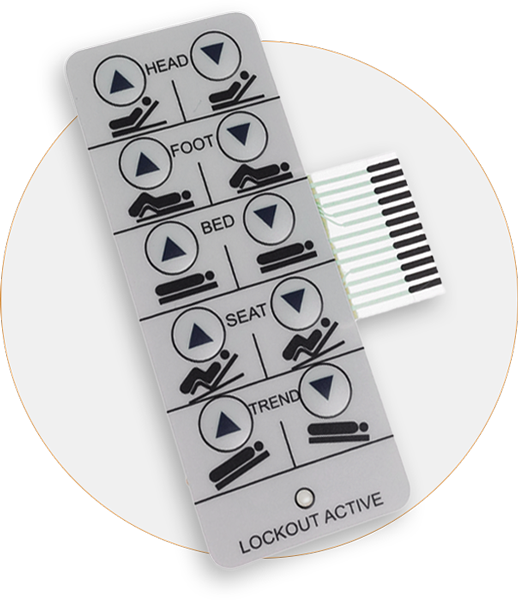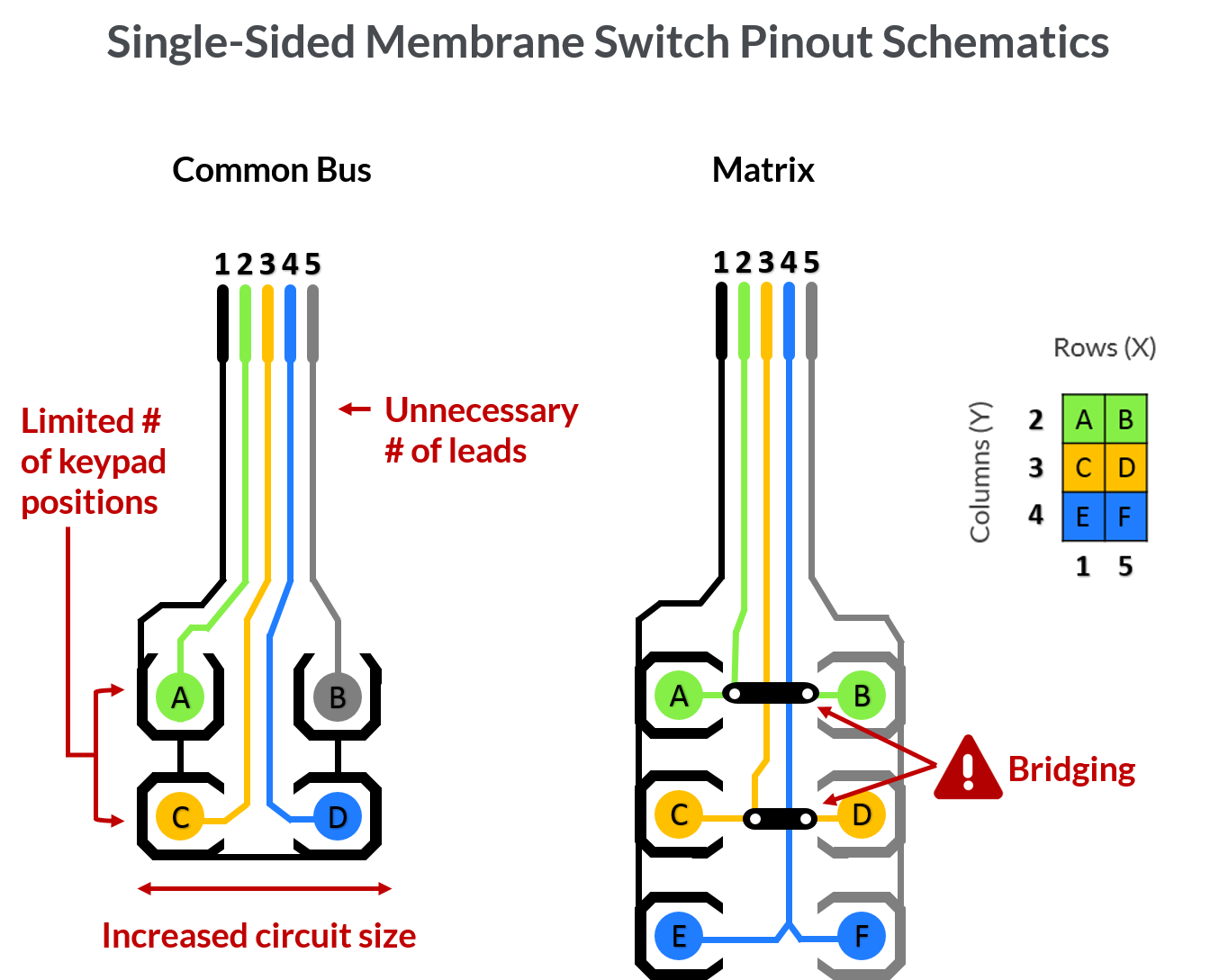Exactly How Membrane Layer Switches Over Add To the Durability of Electronic Control Panels
Membrane switches play an essential function in enhancing the sturdiness of electronic control panels, largely with their multi-layered building which gives reliable protection against environmental elements such as wetness and dirt. The lack of relocating components substantially minimizes the probability of mechanical failings, making membrane switches over suitable for demanding applications.
Meaning of Membrane Buttons

Membrane buttons are made to be slim and lightweight, making them ideal for applications where room is limited. They can be manufactured in different shapes, dimensions, and colors, providing versatility in layout that meets aesthetic and practical requirements. Additionally, membrane buttons can incorporate various technologies, such as responsive comments and LED indications, improving individual experience.
As a result of their building, membrane layer buttons are frequently resistant to dust, moisture, and basic wear, contributing to their resilience in demanding atmospheres. Their smooth design not just facilitates simple cleansing but likewise decreases the threat of mechanical failure, making them a recommended choice for manufacturers looking for trusted interface in their digital control board.
Security Against Environmental Factors
The design of membrane layer switches inherently provides a level of security versus various ecological variables, which is important for preserving performance in difficult problems - Membrane Switch. These buttons are usually constructed with layers of versatile materials that secure inner elements from moisture, dust, and contaminants. By encapsulating the wiring, membrane changes reduce the danger of short circuits and corrosion, which can considerably harm performance
Moreover, using robust adhesives and sealants throughout manufacturing boosts their resistance to ecological obstacles. Membrane layer switches can sustain exposure to chemicals and solvents, making them ideal for markets such as food handling and medical care, where hygiene and cleanliness are paramount. Their smooth surface style likewise avoids the accumulation of dirt and microorganisms, facilitating easier cleansing and upkeep.
Temperature level variations are one more ecological concern, and membrane switches are engineered to work efficiently throughout a large range of temperatures (Membrane Switch). This adaptability ensures that control panels remain operational in various setups, from industrial settings to consumer electronics
Influence On User Interaction
User communication with digital control board is significantly influenced by the design and performance of membrane layer buttons. These buttons supply a tactile interface that boosts the general customer experience, permitting instinctive navigation and control. Their receptive nature makes certain that customers receive prompt comments upon activation, which is critical for tasks needing precision and efficiency.
Additionally, the smooth surface area of membrane changes helps with very easy cleaning and upkeep, promoting user confidence in the click to read reliability of the user interface. This cleanliness is specifically vital in settings where hygiene is vital, such as clinical or food processing setups. Additionally, the compact and lightweight layout of membrane layer changes adds to the visual charm of control panels, urging user involvement via a modern-day and streamlined look.
Moreover, the integration of aesthetic elements, such as printed icons and backlighting, assists customers promptly determine features, lowering the finding out curve connected with new devices. Consequently, users can run tools better, causing enhanced productivity and contentment. In recap, membrane switches play a crucial function in enhancing customer interaction by incorporating capability, appearances, and ease of usage, ultimately resulting in boosted operational performance.
Layout Adaptability and Modification
Layout flexibility and customization are vital elements of membrane layer switches, making it possible for producers to tailor digital control panels to details applications and individual demands. This adaptability permits the assimilation of various design elements, such as colors, graphics, and structures, which can enhance the visual allure and individual involvement of the control board.
Membrane switches can be personalized in shapes and size, accommodating a wide variety of gadgets and applications, from commercial machinery to consumer electronic devices. This flexibility ensures that manufacturers can create instinctive user interfaces that line up with individual assumptions and functional needs. In addition, the ability to include unique attributes such as backlighting or tactile comments further enhances usability, allowing for an extra interactive experience.
Additionally, the manufacturing process for membrane switches over supports the quick prototyping of layouts, enabling manufacturers to iterate and fine-tune their concepts swiftly. This capacity not just increases the advancement timeline but likewise makes certain that the end product meets particular practical and visual criteria.

Cost-Effectiveness and Durability
Cost-effectiveness and long life are substantial benefits of membrane layer buttons, making them an appealing choice for manufacturers and end-users alike. These switches are generally less costly to produce than conventional mechanical buttons, primarily as a result of their streamlined manufacturing procedures and the decreased number of elements needed. This cost benefit expands not just to preliminary production however likewise to long-lasting operational costs, as membrane buttons frequently require much less useful content maintenance and have a reduced failing rate.
Moreover, the longevity of membrane changes adds to their overall worth. Created from long lasting products, they are immune to ecological factors such as wetness, dirt, and chemicals, which can result in premature wear in other switch types. The lack of moving parts decreases mechanical failure, allowing membrane layer changes to keep capability over extended durations.
This sturdiness is particularly valuable in applications requiring constant performance under demanding problems, such as clinical gadgets and commercial equipment. Ultimately, the mix of cost-effectiveness and durability makes membrane layer switches an economically feasible selection for makers, giving reputable options that hold up against the examination of time while maximizing financial factors to consider.
Verdict
Finally, membrane switches substantially improve the sturdiness of digital control board via their robust building and construction and safety functions. look what i found By efficiently protecting circuitry from environmental dangers and reducing the risk of mechanical failing, these buttons make sure regular efficiency in demanding applications. The smooth style advertises health and convenience of upkeep, while modification choices allow tailored solutions for various needs. Overall, membrane switches over stand for a trustworthy and cost-efficient selection for boosting the durability and functionality of electronic control systems.